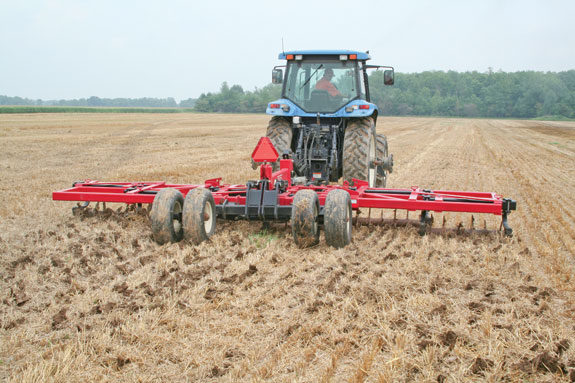In the last article, I discussed how producers or equipment operators could make the most of the downtime between crop seasons. However, in a few months many producers will be jumping right back into action.
The thing that came to my mind was that many producers are working in a bad scenario year-round that produces wear and tear on equipment because of stressful conditions and rough terrain. The following are a few areas to pay attention to while you plan the upcoming crop season.
Wear and tear
Wear and tear on equipment is caused by twisting motions, up-and-down movements and weight on the springs and on the frame of your equipment.
Wear and tear can occur on the equipment beds, in the cabs, the mounting of the engines and transmissions and all other parts that are suspended.
Some producers run discs across fields to smooth out the land, which, in the long run, pays off. This prevents much of the wear and tear on equipment.
What to look for
First of all, check the spring hangers. The inside mechanisms of equipment do get loose and dirty throughout the year. Clean them off and check for tightness and breakage. Look for wear on bushings and breakage in and around the spring hangers and frame, including the fasteners that hold brackets onto the frame.
The following are other parts to look at: rivets, bolts, tires, wheels, lug bolts, braces, brackets, cross members, engine mounts, transmission mounts and the center bearing. All of these parts undergo rough usage.
The front end
Keep the front end of your equipment in mind as well. It is the first thing there, the part that takes the initial impact of the rough terrain.
Put it this way, if you’re going a little too fast and you’re already in the rough part of a field, the front end has already taken a lot of abuse before the back part even gets there.
The springs on the front end, the hangers, the brackets and all the steering mechanism (gear, linkage, drag links, tie rod ends, king pins and bushings) take horrible abuse throughout the crop season.
These are high-priority items that need to be checked periodically. The frame in general should also be checked for cracks and other damage.
Clutches
Some people will say, “I sure put a lot of clutches in.” I think it needs to be pointed out that clutches are the weak point of the whole mechanism. It’s the engagement and disengagement of that piece of equipment. A lot of clutches have torque springs on the inside that can actually flex.
Clutches do slip every now and then. You might want it to slip a little bit. In some instances, not all, this might save the driveline, transmission or differential.
Clutches may need to be adjusted, especially if you have problems getting them in and out of gear due to slippage. It could cause the clutch to destroy itself.
Get a good deal
What does that mean? Before telling yourself “Oh man, I got a good deal on this,” make sure it really is a good deal.
If you buy a piece of equipment, you better make sure to buy something that can resist wear and tear. Equipment should have steel frames or heavy-plated frames that allow for the correct suspension and some movement without causing damage.
Ask yourself the following questions before purchasing a big-ticket item: Will it fit my business? Will it stand the type of work I’m needing to do? Will I have to make a lot of modifications to this equipment?
Conclusion
Now, we come back to training. I can’t emphasize enough the importance of having people that are trained and understand how to operate equipment efficiently and effectively.
These are only a few areas to focus on when planning out this coming crop year. Make sure to consider safety and manufacturers’ guidelines during the planning process as well. FG
PHOTO
Some producers run discs across fields to smooth out the land, which prevents much of the wear and tear on equipment. Photo by FG Staff.













